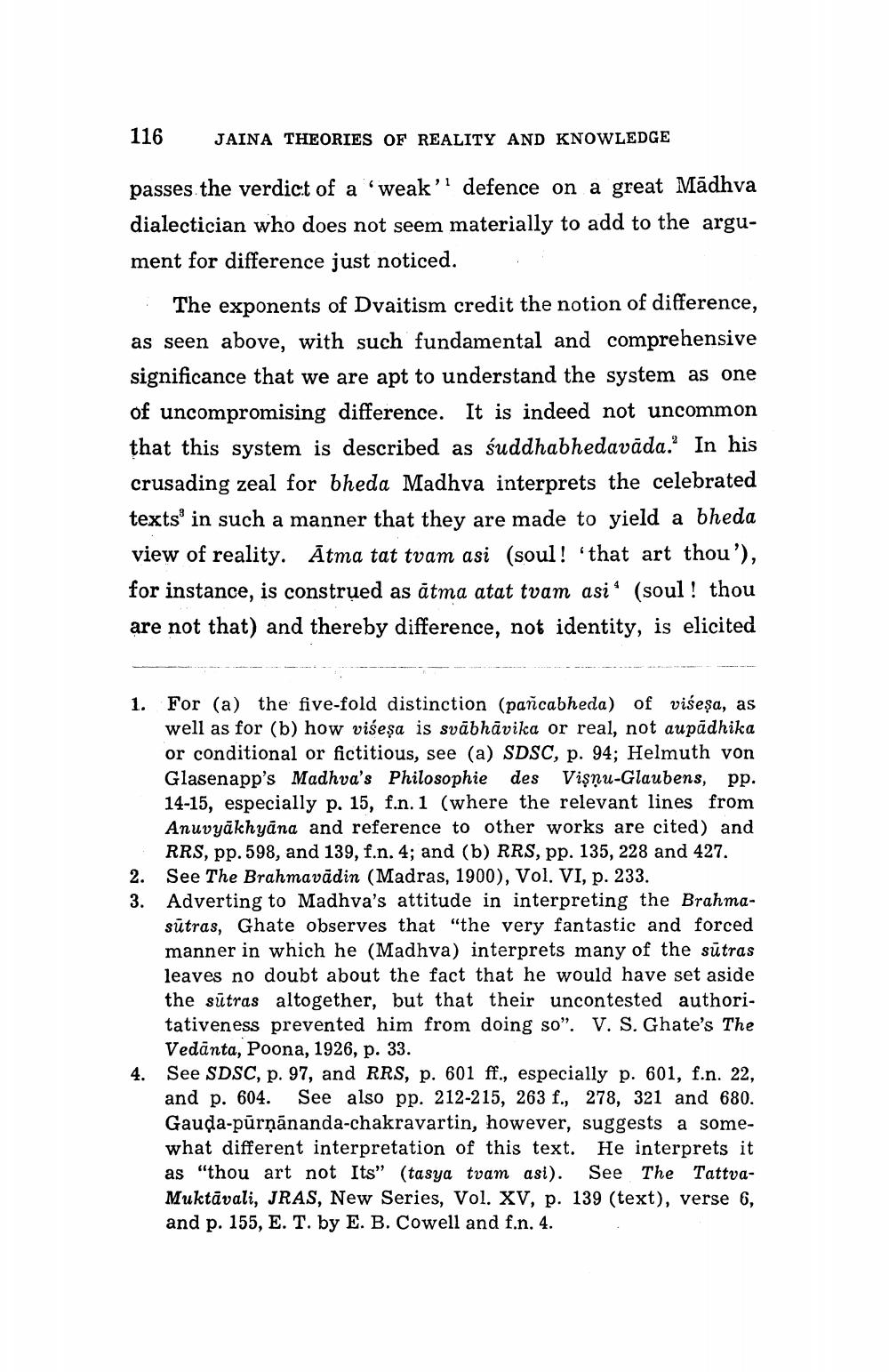________________
116
JAINA THEORIES OF REALITY AND KNOWLEDGE
passes the verdict of a weak' defence on a great Madhva dialectician who does not seem materially to add to the argument for difference just noticed.
The exponents of Dvaitism credit the notion of difference, as seen above, with such fundamental and comprehensive significance that we are apt to understand the system as one of uncompromising difference. It is indeed not uncommon that this system is described as śuddhabhedavāda. In his crusading zeal for bheda Madhva interprets the celebrated texts' in such a manner that they are made to yield a bheda view of reality. Ātma tat tvam asi (soul! 'that art thou'), for instance, is construed as ātma atat tvam asi* (soul! thou are not that) and thereby difference, not identity, is elicited
1. For (a) the five-fold distinction (pañcabheda) of višeşa, as
well as for (b) how višeşa is svābhāvika or real, not aupādhika or conditional or fictitious, see (a) SDSC, p. 94; Helmuth von Glasenapp's Madhva's Philosophie des Vişņu-Glaubens, pp. 14-15, especially p. 15, f.n. 1 (where the relevant lines from Anuvyākhyāna and reference to other works are cited) and
RRS, pp.598, and 139, f.n. 4; and (b) RRS, pp. 135, 228 and 427. 2. See The Brahmavādin (Madras, 1900), Vol. VI, p. 233. 3. Adverting to Madhva's attitude in interpreting the Brahma
sūtras, Ghate observes that "the very fantastic and forced manner in which he (Madhva) interprets many of the sūtras leaves no doubt about the fact that he would have set aside the sūtras altogether, but that their uncontested authoritativeness prevented him from doing so". V. S. Ghate's The Vedānta, Poona, 1926, p. 33. See SDSC, p. 97, and RRS, p. 601 ff., especially p. 601, f.n. 22, and p. 604. See also pp. 212-215, 263 f., 278, 321 and 680. Gauda-pūrņānanda-chakravartin, however, suggests a somewhat different interpretation of this text. He interprets it as "thou art not Its" (tasya tvam asi). See The TattvaMuktāvali, JRAS, New Series, Vol. XV, p. 139 (text), verse 6, and p. 155, E.T. by E. B. Cowell and f.n.4.




